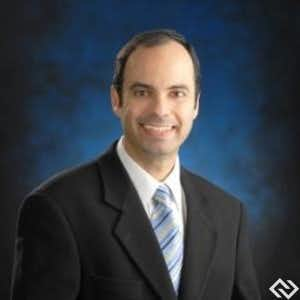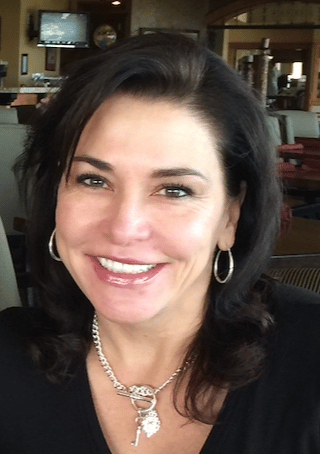Delay Leads to Pediatric Middle Ear Erosion and Hearing Loss
The physician’s delay in treating a pediatric patient for middle ear erosion led to surgery and continued hearing loss.
Updated on
Case Summary
In this case, a child was evaluated by an ear, nose, and throat specialist (otolaryngologist) for chronic left ear infections. A CT scan in 2007 revealed a cholesteatoma. A cholesteatoma is a growth behind the eardrum, in the middle part of the ear where tiny bones relay sound waves from the eardrum to the inner ear. In this case, the physician’s plan was to wait and watch. A follow-up CT scan 4 years later showed the mass that caused the middle ear erosion had expanded and surgery was performed at that time. The child’s condition continued to worsen, and in 2014 an MRI and CT scan demonstrated continued erosion of the middle ear.
Case Theory
A cholesteatoma, or keratoma, is an abnormal growth of squamous cells in the mastoid and middle ear. The condition is generally progressive and can recur after surgery. A cholesteatoma can damage hearing, cause dizziness, and damage facial nerves when they enlarge, surround, and destroy the ossicles (eardrum), resulting in conductive hearing loss. Hearing loss often occurs if the cholesteatoma obstructs the Eustachian tube orifice, leading to middle ear effusion. Early diagnosis is crucial to an optimal outcome.
As a cholesteatoma grows, it can damage the bones of the middle ear. The serious issue is that the cyst can eat away at whatever it touches. If a cholesteatoma is not treated, it can invade the tiny bones behind the eardrum, dissolve part or all of the structures in the middle ear, and as a result, cause hearing loss. If it grows large, it can even dissolve through the bone separating the middle ear space and the brain. Serious potential complications of cholesteatoma include hearing loss, brain abscess, dizziness, facial paralysis, meningitis, and a spreading of the cyst into the brain. Surgery is used to remove the cholesteatoma. Since the source of the problem in many cases is Eustachian tube dysfunction (when the ears don’t ‘pop’), in 50-75% of cases the cholesteatoma returns, and additional surgery may be necessary.
The long-term effects of unilateral hearing loss in children result in the likelihood that a child is 10 times more likely to fail a grade in school or need special help to keep up in school. Up to 50% of children with hearing loss who have not received adequate care to address their hearing loss have difficulty learning in school. Most social rules are learned through subtle auditory and visual cues rather than direct teaching. Due to this fact, approximately 20% of children with hearing loss will develop behavioral or social problems. In this case, as a result of the deviation from the standard of care and the delay in treatment, the middle ear outcome and future quality of life were worsened.
Expert Witness Specialities
Pediatric Otolaryngology
A pediatric ENT can opine on the deviation from the standard of care, proper treatment, effect on the quality of life, and need for future care.
Questions for Expert Witnesses
- What is the appropriate interval in which to monitor the progression of a cholesteatoma?
- What effect might you expect from a delay in the treatment of a cholesteatoma?
- Can the placement of Eustachian tubes (ear tubes) prevent the progression of a cholesteatoma?
- How often does a cholesteatoma require follow-up surgery?
- Is a 4-year delay in the surgical treatment of cholesteatoma negligent?
Expert Witness Involvement
Here is what the pediatric otolaryngology expert in this case had to say:
Expert Witness Response E-009290
 I am a neurotologist with 17 years of cholesteatoma surgery experience. I do cholesteatoma surgery weekly and have done over 500 cases in total. If a cholesteatoma is diagnosed, it needs to be removed expeditiously as delayed treatment will cause destruction and potentially devastating complications. I have been an expert on a cholesteatoma case where multiple physicians missed/observed it in a child who ended up getting a brain abscess.
I am a neurotologist with 17 years of cholesteatoma surgery experience. I do cholesteatoma surgery weekly and have done over 500 cases in total. If a cholesteatoma is diagnosed, it needs to be removed expeditiously as delayed treatment will cause destruction and potentially devastating complications. I have been an expert on a cholesteatoma case where multiple physicians missed/observed it in a child who ended up getting a brain abscess.
About the author
Erin O'Brien
Erin O'Brien is a senior medico-legal writer and editor, with 25 years of experience authoring healthcare deliverables. Previously, Erin authored an award-winning column in the health and wellness sector, guest hosted a wellness radio show, and received an FMA Charlie Award for Excellence in Writing.
Erin has reviewed and completed case studies for thousands of medical malpractice cases, both plaintiff and defense nationwide, and was presented the US Chamber of Commerce Best Small Business Blue Ribbon designation. Erin is an experienced Medical Risk Consultant and device start-up project manager. She has consulted for numerous successful healthcare and bio-tech start-ups. After completing a Bachelor of Science degree at the University Of Wisconsin, Erin pursued an educational background in Healthcare Risk Management at the University of South Florida. Erin crafts her work with attention to detail, readability, healthcare marketing regulations, and medical standard of care.
Subscribe to our newsletter
Join our newsletter to stay up to date on legal news, insights and product updates from Expert Institute.
Sign up nowFind an expert witness near you
What State is your case in?
Subscribe to our newsletter
Join our newsletter to stay up to date on legal news, insights and product updates from Expert Institute.



